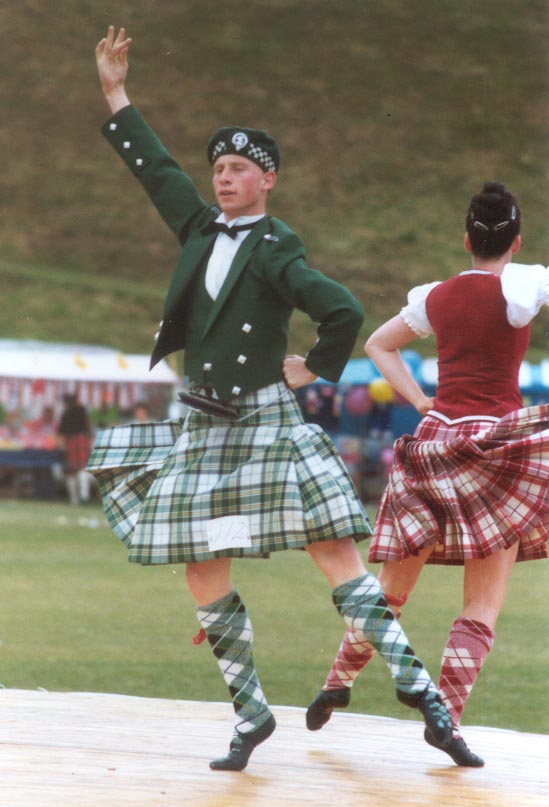"Dancing Dynasty, Part One"

Deryck Mitchelson
If that term, "Dancing Dynasty" can be used, it certainly pertains to the Mitchelsons. A family full of talent and love of the world of Highland dancing. Over the years they have paid their dues and also claimed their rewards. The family, including mother, aunt, sister, and brothers have hoisted the silverware too many times to list here. Brothers Gareth (Dancers note: readers will recall Gareth's interview in Dancer a few months back) and Deryck have also shared the Cowal Cup with their mother Wilma Tolmie, something that is a very rare happenstance indeed. Due to space constraints Deryck's story will be in two parts, just like his continuing highland dancing journey. Deryck has won the Cowal Cup (SOBHD World Championship) on more than one occasion: World Juvenile - 1985, 1986; World Junior - 1988;World Adult 1991, 1994, and 1995.
Deryck writes: "Most special was undoubtedly my first Adult world championship in 1991. Having previously won both the Juvenile and Junior championships I was keen to try and add the Adult title also. It was a fantastic feeling lifting the same World Championship trophy that both my mum and brother had won. 1994 though, was also special. I think that was best performance!"
Q. The dance lists on the internet have had various discussion as to the "Cowal Champions" who planted their standard when they saw the competition .I was informed that you were such a dancer. What in your opinion needs to be done in today's championships to bring back the "true competitor"?
A." I think we still have "true competitors", although perhaps less of them.
Nowadays it is common for youngsters to participate in many activities or hobbies. This was not so common when I competed. I realized that in order to succeed, my energies had to be directed down a single channel. I was always aiming to push that bit harder - to better my past performances.
What I think we lack at the moment though are the personalities of the previous generation. This is a shame!"
Q. If you could talk to a champion of yesteryear who would it be and why and what questions would you like to ask of them?
A. "Whilst there have some great champions from past history worth meeting I always try to look forward not back, and would find it exciting to meet dancing "standard setters" of the future. Questions such as "how has the technique changed?" and "what dances comprise a championship?" could be answered.
I think currently we are at, or near, the pinnacle of competitive Highland Dancing and would love to see some subtle changes taking effect to increase the exposure and brighten up the event. We need to start exploring new steps and techniques. There may be room for a freestyle element in Championships.
How will Highland Dancing change and adapt with technology? Dancing lessons with the use of computer web cams? An "online" fully animated textbook?
Q. What advice would you give the beginning dancer and what advice would you give the dancer striving for championship level?
A. "It is so important for all dancers to get an excellent grounding in basic technique. Practicing the correct way to do things should make this technique more natural to the dancer. At a young age it should not be important who can jump the highest and who does the biggest high cuts. Hitting all the right positions and achieving an easy to watch style are more important. A good teacher should always put in place the building blocks first.
For the championship competitor there are many important things: appearance, style, technique are just some. The competitive dancer should consider what their strengths and weaknesses are. I often used a video camera when practicing and would then watch back my performance as if I were a judge. I would write down what I liked and disliked about the performance.
Talking as a judge, first impressions are so important. Stand tall and be proud of yourself."
Q. There seems to be not only very few male competitors on the platform and hardly any up and coming adult dancers what do you think needs to be addressed so that the males and the younger dancers coming through the ranks continue the progression through to adult?
A. "There is not an easy solution to encourage more males to continue dancing. We should be encouraging more involvement through education and schooling. Perhaps if more males tried dancing they would discover how much fun it could be.
I don't think there is a problem with the young dancers progressing into adult groups. In the adults, a small number of dancers nearly always do most of the winning. This makes it difficult for young dancers to successfully progress. This is common to most sporting disciplines. They just have to be patient and strive to improve. Their turn should come."
To be continued
